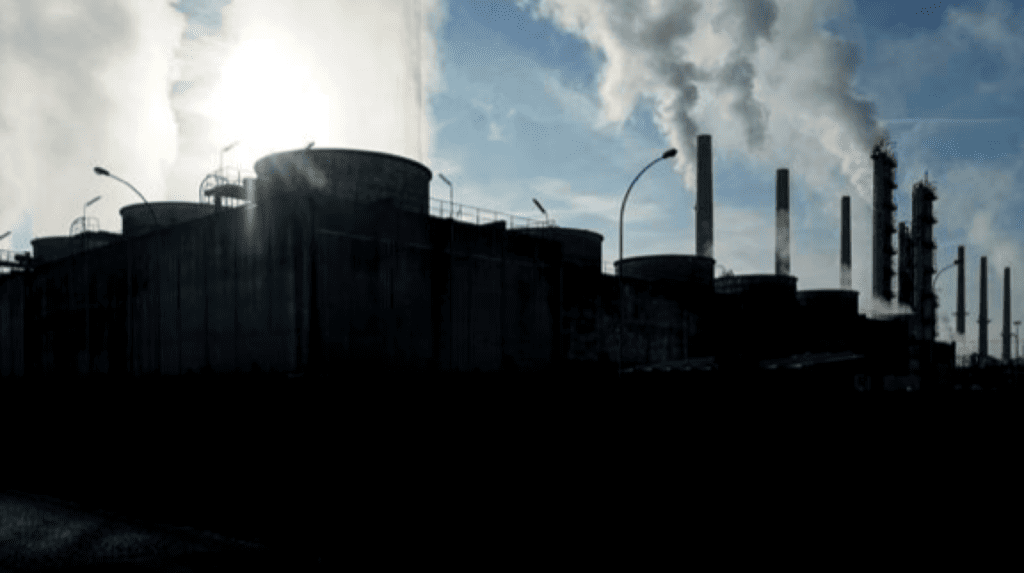Daniel Salzler No. 1121
EnviroInsight.org Five Items October 29, 2021
—————Feel Free To Pass This Along To Others——————
If your watershed is doing something you would like others to know about, or you know of something others can benefit from, let me know and I will place it in this Information newsletter.
If you want to be removed from the distribution list, please let me know.
Please note that all meetings listed are open.
Enhance your viewing by downloading the pdf file to view photos, etc. The
attached is all about improving life in the watershed. If you want to be removed from
the distribution list, please let me know. Please note that all meetings listed are open.
Enhance your viewing by downloading the attached pdf file to view photos, etc.
The attached is all about improving life in the watershed.
Read this newsletter at EnviroInsight.org
1. Greenhouse Gas Levels Hit A New Record As Emissions Cuts Fall Short, Reports Say. GENEVA (AP) — Greenhouse gas concentrations hit a new record high last year and increased at a faster rate than the annual average for the last decade despite a temporary reduction during pandemic lockdowns, the World Meteorological Organization said in a report published Monday.
The news came as the United Nations climate office warned that the world remains off target for meeting its goal of cutting emissions as part of international efforts to curb global warming.
Both announcements came days before the start of a U.N. climate change conference in Glasgow, Scotland. Many environmental activists, policymakers and scientists say the Oct. 31-Nov. 12 event, known as COP26 for short, marks an important and even crucial opportunity for concrete commitments to the targets set out in the 2015 Paris climate accord.
“The Greenhouse Gas Bulletin contains a stark, scientific message for climate change negotiators at COP26,” World Meteorological Organization Secretary-General Petteri Taalas said of his agency’s annual report on heat-trapping gases in the atmosphere. “At the current rate of increase in greenhouse gas concentrations, we will see a temperature increase by the end of this century far in excess of the Paris agreement targets of 1.5 to 2 degrees Celsius (2.7-3.6 Fahrenheit) above pre-industrial levels.”
The report draws on information collected by a network that monitors the amount of greenhouse gases that remain in the atmosphere after some quantities are absorbed by oceans and the biosphere.
In its report, the Geneva-based agency also pointed to signs of a worrying new development: Parts of the Amazon rainforest have gone from being a carbon “sink” that sucks carbon dioxide from the air to a source of CO2 due to deforestation and reduced humidity in the region, it said.”One of the striking messages from our report is that the Amazonian region, which used to be a sink of carbon, has become a source of carbon dioxide,” Taalas said. “And that’s because of deforestation. It’s because of changes of the global local climate, especially. We have less humidity and less rainfall.”

Oksana Tarasova, chief of WMO’s atmospheric and environment research division, said the results showing the Amazon going from sink to source were a first, but he noted they were from a specific southeastern portion of the Amazon, not the entire rainforest.The U.N. climate office said separately Monday that its assessment of the formal commitments made by countries that signed up to the Paris accord suggests the world could reduce its emissions by 83-88% by 2050 compared with 2019.
More worryingly, emissions in 2030 are projected to be 16% higher than in 2010, based on formal pledges so far.
“Such an increase, unless changed quickly, may lead to a temperature rise of about 2.7C (4.9F) by the end of the century,” the U.N. said.
Experts argued that emissions must halve by 2030 compared with 2010 levels and essentially hit zero by mid-century, if the Paris goal of capping global warming at 2C, ideally no more than 1.5C, is to be achieved.
“Overshooting the temperature goals will lead to a destabilized world and endless suffering, especially among those who have contributed the least to the GHG emissions in the atmosphere,” said Patricia Espinosa, who heads the U.N. climate office.
“We are nowhere near where science says we should be,” she added.
Alok Sharma, who will preside over the U.N. talks in Glasgow, said progress had been made since the Paris deal was struck in 2015, when projections of existing emissions cuts pointed to warming of up to 4C.
The global average concentration of carbon dioxide, the main greenhouse gas, hit a new high of 413.2 parts per million last year, according to the WMO report. The 2020 increase was higher than the annual average over the last decade despite a 5.6% drop in carbon dioxide emissions from fossil fuels due to COVID-19 restrictions, WMO said.
Taalas said a level above 400 parts per million – which was breached in 2015 — “has major negative repercussions for our daily lives and well-being, for the state of our planet and for the future of our children and grandchildren.”
Human-incurred carbon dioxide emissions, which result mostly from burning fossil fuels like oil and gas or from cement production, amount to about two-thirds of the warming effect on the climate. WMO said overall, an economic retreat last year because of the pandemic “did not have any discernible impact on the atmospheric levels of greenhouse gases and their growth rates, although there was a temporary decline in new emissions.” [We can all do something to help reverse this.] Source: Associated Press.
2. Climate Change Affects Animal Behavior. University of Helsinki. According to a study pertaining to more than a hundred animal species, environmental change brought about by humans has the greatest impact on the animals’ activity in exploring their environment.
Humans are shaping environments at an accelerating rate. Indeed, one of the most important current topics of research is the capacity of animals to adapt to human-induced environmental change and how that change affects the expression of animal traits.
With the help of data collected on a little over one hundred animal species, researchers from the University of Helsinki and Lancaster University studied which behavioural traits are the most sensitive to human-induced environmental change, and to which human-induced changes in the environment animals respond the most sensitively. From the largest to the smallest, the groups of organisms included in the study were fish, birds, crustaceans and mammals. In addition, insects, amphibians and lizards were represented.
All the behavioural traits included in the study — aggression, activity, boldness, sociability and exploration of their environment — changed markedly due to environmental change brought about by humans.
“The biggest change was seen in the animals’ activity in exploring their environment. Animals have a strong response to all forms of environmental change, but climate change engendered the greatest change in animal behaviour,” says Postdoctoral Researcher Petri Niemelä from the Faculty of Biological and Environmental Sciences, University of Helsinki.
In addition to climate change, the other forms of human-induced environmental change included in the modelling were changes in carbon dioxide concentration and nutrient levels, alien species and other biotic changes caused by humans, as well as direct human impact through, for example, urbanisation or other human disturbances.
Changes in activity or other behaviour can often be the initial change in animals instigated by climate change.
“Behavioural change can serve as a buffer with which animals avoid the immediate negative effects of environmental change. For instance, such change can compensate for low reproductive success or increased mortality caused by environmental change. By changing their behaviour, animals can also gain more information on the altered environment. “The researchers of the University of Helsinki and Lancaster University based the study on an analysis were collected on a little over one hundred animal species. The study was published as an open-access publication in the international OIKOS journal series in September 2021.
Source: https://www.sciencedaily.com/releases/2021/10/211019110537.htm
3. Bring Chemistry To Life For All Ages: “Kate The Chemist” Dr. Kate Biberdorf is a chemist, science entertainer, and professor at The University of Texas. Through her theatrical and hands-on approach to teaching, Dr. Biberdorf is breaking down the image of the stereotypical scientist, while reaching students who might otherwise be intimidated by science. Students’ emotional responses, rather than rote memorization of facts, are key to Biberdorf’s dynamic approach to her program, as well as science in general. Her exciting and engaging program leaves audiences with a positive, memorable impression of science—all while diminishing the stigma around women in science. She has appeared on The Today Show, The Kelly Clarkson Show, NBC Nightly News, the Wendy Williams Show, the Rachael Ray Show, and Late Night with Stephen Colbert.
She is the author of the bestseller The Big Book of Experiments, a full-color non-fiction book featuring 25 fun, kid-friendly experiments kids can do in their own kitchens. Readers learn how to make slime, fake tattoos, edible snot, glitter volcanoes and more—all with the help of step-by-step instructions, ingredients lists, stunning photographs, a messiness factor rating, safety reminders, and a note from Kate about how each fun-tastic from Kate about how each experiment works. It was such a hit with kids across the country that Amazon selected it as one of their Best Books of 2020!

Dr. Biberdorf’s much anticipated follow-up book, The Awesome Book of Edible Experiments, is available at this time To read more, go to KateTheChemist.com for many additional books.
4. Halloween 2021. Halloween is a holiday celebrated each year on October 31, and Halloween 2021 will occur on Sunday, October 31. The tradition originated with the ancient Celtic festival of Samhain, when people would light bonfires and wear costumes to ward off ghosts.

In the eighth century, Pope Gregory III designate November 1 as a time to honor all saints. Soon, All Saints Day incorporated some of the traditions of Samhain. The evening before was known as All Hallows Eve, and later Halloween. Over time, Halloween evolved into a day of activities like trick-or-treating, carving jack-o-lanterns, festive gatherings, donning costumes and eating treats.
By 43 A.D., the Roman Empire had conquered the majority of Celtic territory. In the course of the 400 years that they ruled the Celtic lands, two festivals of Roman origin were combined with the traditional Celtic celebration of Samhain. The first was Feralia, a day in late October when the Romans traditionally commemorated the passing of the dead. The second was a day to honor Pomona, the Roman goddess of fruit and trees. This celebration probably explains the tradition of bobbing for apples that is practiced today on Halloween.
In the U.S., the celebration of Halloween was extremely limited in colonial New England because of the rigid Protestant belief systems there. Halloween was much more common in Maryland and the southern colonies.
In the late 1800s, there was a move in America to mold Halloween into a holiday more about community and neighborly get-togethers than about ghosts, pranks and witchcraft. At the

turn of the century, Halloween parties for both children and adults became the most common way to celebrate the day. Parties focused on games, foods of the season and festive costumes. Read more on Halloween at https://www.history.com/topics/halloween/history-of-halloween
5. Need A Tax Write Off For 2021? We’re getting closer to the end of the year and the time to think about contributing to charitable organizations, a.k.a. non-profit organizations.
Whether you choose to give money to a local school athletic or band group, a local environmental education non-profit like EnviroInsight.org or a national and international group like Save The Children Foundation, it is close to the time to contribute.
Copyright 2021 EnviroInsight.org
